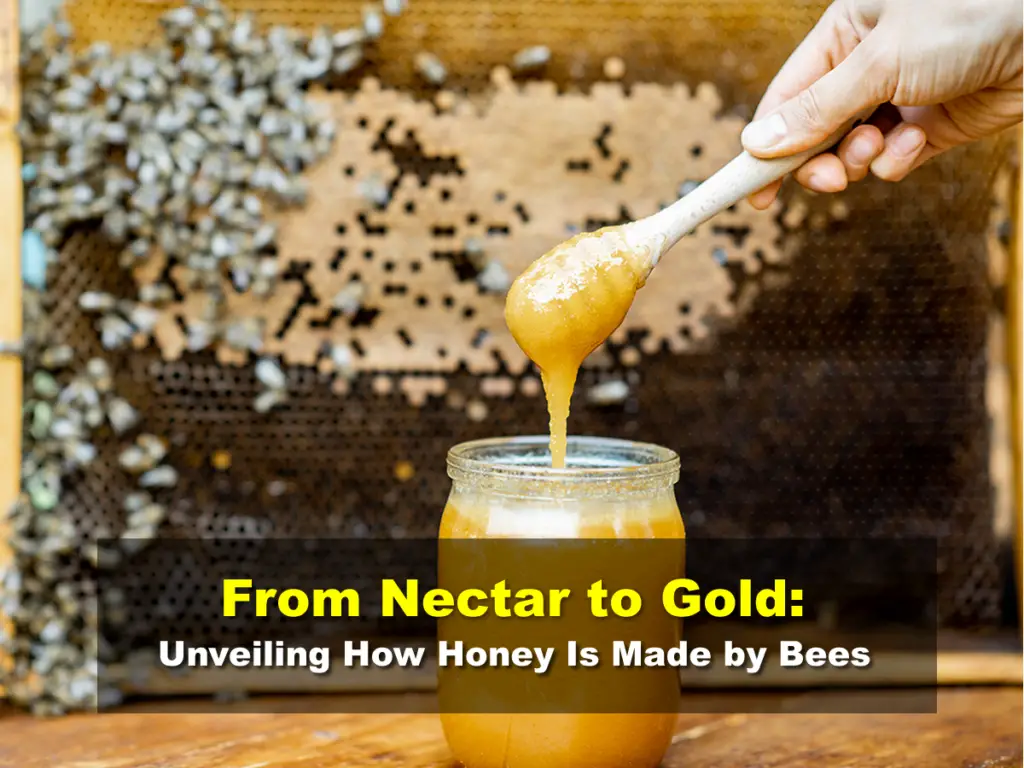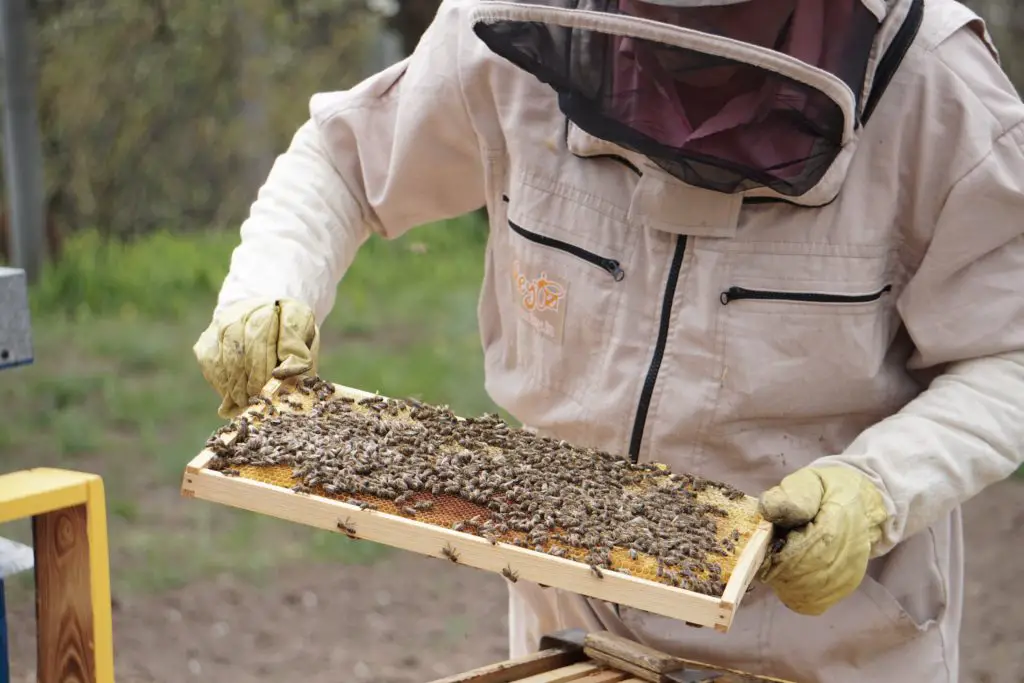Affiliate Disclaimer - As an Amazon Associate I earn from qualifying purchases.
It supports the website. So, Thank you
Bees are some of the most fascinating creatures on Planet Earth. They are completely self-sufficient and make their own food in large colonies with each member playing a role to support the well-being of its comrades.
Not all bees make honey but many do and humans have long harvested this golden liquid for its sweet taste and medicinal properties. But how is honey made by bees?
It all starts with the worker bees heading out to collect nectar. It’s then taken back to the hive where it’s broken down and the bees work hard to evaporate any unnecessary liquids. The end result is that sweet, precious honey that we all know and love.
Of course, this is a very brief explanation of how honey is made; there’s a lot more to it. In this guide, I’m going to take a deep dive into the world of honey production by bees and I think you’ll agree, it’s an amazing subject.
Table of Contents
Why Do Bees Make Honey?
Did you ever wonder why the bees in the Winnie The Pooh cartoons were so keen to protect their honey stash from that greedy little bear? It wasn’t because they don’t like to share. It’s because, without honey, they’d never survive throughout the winter.
When you think of honey, you might imagine it as a byproduct of bees but it’s actually their main calling. They make honey as a food source for the colony, especially over the cold winter months when other food sources are not available.
During the spring and summer, bees will flit from flower to flower collecting nectar and pollen. These substances are taken back to the hive where they’re processed and used to feed the colony. When the worker bees are out and about, they’ll often feed on nectar as a way to give themselves more energy for foraging.
However, when winter comes, most of the flowers disappear so it’s vital that the bees have another food source. And that’s where honey comes in.
A single colony should produce enough honey to last them throughout winter. However, supplies are often scarce which is why beekeepers sometimes have to supplement this with sugar syrup. Not only do bees rely on honey as a food source during winter, but they’ll also huddle close together and avoid leaving the hive in order to survive.

Do All Bees Make Honey?
There are around 20,000 different species of bees in the world and surprisingly, only around 4% of these are capable of making honey. In North America, there are around 4000 known species of bees but none of our native bees produce honey.
You might be confused by this statement since there are thousands of honey bee colonies dotted around the United States and beekeeping is in full swing. But all of the honey bees here have been introduced from Europe.
Bee Factories: The Honey-Making Process
Every time I think about honey production it blows my mind. Bees live in colonies and each member has its own job. Without it, the colony wouldn’t survive and it’s the worker bees that are responsible for making honey but even here, they all have their own job to do.
Around 98% of a beehive is made up of worker bees (the others are drones or the queen.) It simply wouldn’t be possible for a single bee to produce honey alone which is why teamwork is so important in the hive.
The first bees to take action are those that go out to forage. They fly from flower to flower collecting nectar which they suck out using a special tongue known as a proboscis. Once they’ve sucked as much nectar out of the flower as possible, they will store it in what is, for all intents and purposes, a second stomach which is used just for honey storage.
Once this stomach is full, the bee will head back to the hive to make its nectar delivery. It’ll be met by bees whose sole job is to chew the nectar and they do this for around half an hour. As they chew it, enzymes within their saliva turn the nectar into a new substance which consists of water and honey.
After the chewing process is over, the bees will deposit this new substance into the honeycombs where any excess water can evaporate. There are even bees whose job is to fan the substance with their wings in order to aid evaporation.
Now that the production of the honey is complete, a new team of worker bees can come in and cap off the honeycombs, leaving the honey safe for when it is needed. The bees use wax to do this and you can find out how bees make wax in my post on the subject.
How Much Honey Does A Single Beehive Make?
Did you know that bees will fly around 55,000 miles just to make a pound of honey? That is like traveling around the world twice. So when I tell you that a single hive could produce up to 200 pounds of honey a year, it really shows how hard our little friends are working.
Of course, that’s at the high end of the scale and a small colony or one that is not properly established may make only 10 pounds of honey in a year.
Can I Take All Of My Bees’ Honey?
It is vital that, as a beekeeper, you do not harvest all of the honey in your hive each year. If you do then you’re leaving the bees without a food supply over winter and it’s as good as certain that they will die.
In order to avoid this, you need to figure out how much honey your bees will need and even then, leave a little extra.
On average, a hive will produce around 55 pounds of surplus honey in a year. But this can vary massively depending on the size of the colony and how productive they are. I couldn’t possibly put an exact figure on how much honey you can take from your bees; this is something you need to assess each year when it’s time to harvest.
Final Thoughts
Have you ever wondered how is honey made by bees? While they may be small, bees are some of the most hard-working insects in the world, traveling serious distances and playing an important role within the hive to produce food.
And that’s exactly what honey is; a source of food for the bees which is why they’re so keen to keep producing it. Without it, the colony wouldn’t survive and humans would be left without their precious harvest.
So, next time you see a honey bee sitting on a flower, keep in mind that this is probably a worker bee on the hunt for nectar to make honey.




